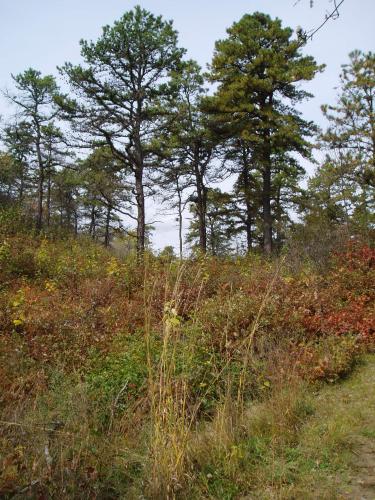Pine Barrens habitat restoration is an ongoing process
— From the Albany Pine Bush Preserve Commission
An open ecosystem is an important part of the traditional Pine Bush. The Albany Pine Bush Preserve Commission, as part of its wildlife restoration work, has begun a project this winter thinning forested areas that block light from reaching lower-growing plants and do not support many of the plants and animals native to the Pine Bush.
Have you ever heard of the Albany Pine Bush Preserve? Better yet, have you ever visited it? Walked on the trails? Attended an educational program?
If you have never heard of the Pine Bush, I hope to help you come to know a bit more about it through this column. If you have visited before, I hope to point out something new to you, as I share what’s currently planned for the Albany Pine Bush Preserve.
The air is cold and the pitch pine trees with their green needles seem to stand out this time of year as many other trees and bushes stand bare. The pitch pine tree is a very important tree here in the Albany Pine Bush.
The Albany Pine Bush is a globally rare ecosystem known as an inland pine barrens. Inland pine barrens are characterized by an open landscape of shrubs, grasses, wildflowers, and scattered trees, most of them pitch pine.
The Albany Pine Bush is also home to many animals, including the federally endangered Karner blue butterfly. In the last 25 years, 55 species of greatest conservation need in New York State have also been documented in the preserve.
In more recent years, some regions of the preserve have become much more forested with pitch pine and other trees. These forested areas block light from reaching lower-growing plants and do not support many of the plants and animals native to the Pine Bush. Shrubs, wildflowers, grasses, insects, amphibians, reptiles, birds, and mammals can all be affected when areas become more forested.
Historically, fire maintained this open ecosystem. Fire suppression has drastically changed the landscape in many parts of the preserve.
Past agricultural activities in the area have also impacted the land, allowing a much more dense forest to grow. This not only changes the look of the landscape but it also affects the plants and animals that were historically found here while increasing the chance of tree-top or “crown” wildfires.
As part of The Albany Pine Bush Preserve Commission’s wildlife habitat restoration work this winter, the commission has begun a tree-thinning project. In 2013, pitch pine and other trees have been marked with paint. During the winter of 2014 –15, trees will be removed.
The concept that a nature preserve would be removing trees can be difficult to understand. However, by removing about 65 percent of the pitch pine trees in the densely forested Madison Avenue Pinelands region of the preserve, the quantity and quality of the pine barrens in the preserve will increase.
What may seem like destruction will actually allow more sunlight to reach the low-growing plants like wildflowers, shrubs and grasses and improve habitat for wildlife. This all contributes to the health of this globally rare inland pitch pine scrub oak barrens.
Though the dense forest in this area will be gone, pitch pine trees are still a very important component of the pine barrens. You will continue to see them scattered among the shrubs, grasses, and wildflowers as you glance over the dunes.
If you want more information about the Albany Pine Bush Preserve, its Discovery Center, or the pine barrens restoration in the preserve, feel free to visit our website at albanypinebush.org/conservation/tree-thinning, give the commission a call at 456-0655, or stop in to the Discovery Center at 195 New Karner Road in Albany.
